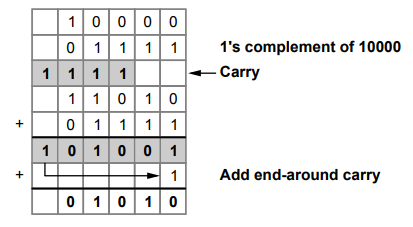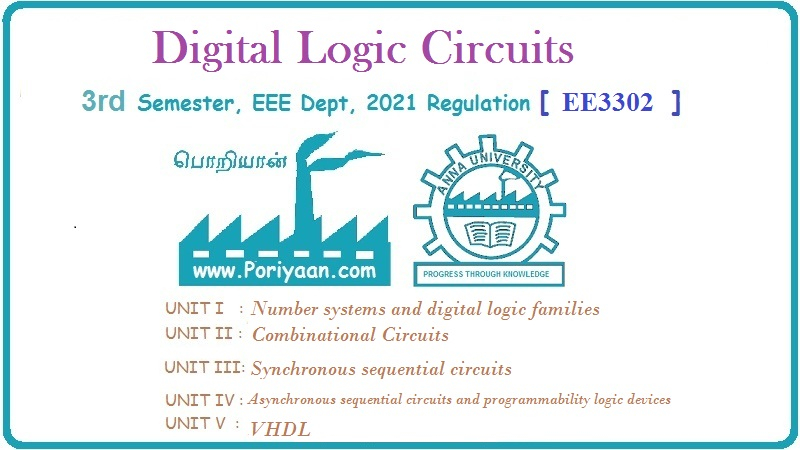Digital Logic Circuits: Unit I: (a) Number Systems
Two Marks Questions with Answers
Number Systems | Digital Logic Circuits
Digital Logic Circuits: Unit I: (a) Number Systems : Two Marks Questions with Answers
Two Marks Questions with Answers
Q.1
What is meant by weighted and non-weighted coding ?
Ans.
:
Weighted codes : In weighted codes, each digit position of the number
represents a specific weight. For example, in decimal code, if number is 567
then weight of 5 is 100, weight of 6 is 10 and weight of 7 is 1. In weighted
binary codes each digit has a weight 8, 4, 2 or 1. The codes 8421, 2421 and
5211 are all weighted codes. (Refer Tables 1.7.1, 1.7.3 and 1.7.5)
Non-weighted
codes : Non-weighted codes are not assigned with any weight
to each digit position, i.e., each digit position within the number is not
assigned fixed value. Excess-3 and gray codes are the non-weighted codes.
Q.
2 Encode the ten decimal digits in the 2 out of 5 code. AU
: CSE : Dec.-02
(Refer
section 1.7.6)
Q.
3 Show that the excess-3 code is self-complementing. AU
: CSE : Dec.-02, May-03
(Refer
section 1.7.4)
Q.
4 What are the different ways to represent a negative number ?
(Refer
section 1.4)
Q.5
What is the advantage of gray codes over the binary number sequence ?
(Refer
section 1.7.5)
Q.
6 What are error detecting codes?
AU
: CSE : May-07
(Refer section 1.8)
Q.
7 Perform subtraction using l's complement
(10000)2 – (10000) 2
AU
: CSE : Dec.-09
Ans
:

Q.
8 Perform 9's and 10's complement subtraction between 18 and - 24.
(Refer
example 1.7.9)
Q.
9 Convert the (153.513)10 to Octal.
(Refer
example 1.3.16)
Q.
10 Find the octal equivalent of hexadecimal number AB.CD
Ans
:
(231 . 4065)8
Q.
11 Represent the decimal numbers - 200 and 200 using 2's complement binary
form.
(Refer
example 1.4.3)
AU
: CSE : May-11
Q.
12 Perform the following code conversions :
(1010.10)16 → (?)2 → (?)2 → (?)10
AU
: CSE : Dec.-ll
Ans.
:
(1000000010000.0001)2,
(10020.02) 8, (4112.0625) 10
Q.13
Subtract 11001 from 01101 using 2's complement.
AU
: CSE : Dec.-11
Ans.
: 1100.
Q.14
Convert (2. B2)16 to binary and octal numbers.
Ans
. :

Q.15
Using 2’s complement perform (6)10 - (3)10
AU
: CSE : May-11

Q.16
Write the application of gray code. AU : CSE :
May-12
(Refer
section 1.7)
Q.17
Convert: a) (475.25)8 to its decimal equivalent.
(Refer
section 1.2.3) b) (549.B4)16 to its decimal equivalent.
(Refer
example 1.3.4)
Q.
18 What is an unit distance code ? Give an example.
(Refer
section 1.7.5)
AU
: Dec.-15
Q.19
What is a gray code and mention its advantages ?
[Section
1.7.5]
Digital Logic Circuits: Unit I: (a) Number Systems : Tag: : Number Systems | Digital Logic Circuits - Two Marks Questions with Answers
Related Topics
Related Subjects
Digital Logic Circuits
EE3302 3rd Semester EEE Dept | 2021 Regulation | 3rd Semester EEE Dept 2021 Regulation
